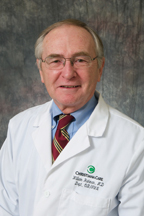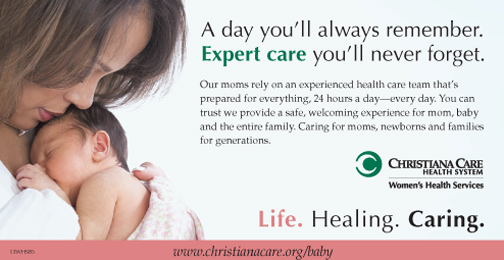Keeping Bones Healthy For A Lifetime

By William Hohman, M.D.
Osteoporosis is a serious disorder that can keep a woman from enjoying an active lifestyle, especially as she grows older. It is a disease in which the bones lose their normal architecture, become extremely soft and are subject to fracture and slow healing. This can occur especially in women following menopause. Certain medical conditions, such as an overactive thyroid gland, can further contribute to decreased bone strength.
Unlike some other disorders, osteoporosis doesn’t begin with obvious symptoms. That’s why it’s especially important for women to develop good habits when they are young to help keep their bones healthy so they can remain vibrant and fit well into their golden years.
Bone density is a medical term referring to the amount of calcium and other mineral matter per square centimeter of bone. Bones should be dense, so they don’t easily break. One common way to measure bone density is with a simple imaging test known as dual photon densitometry or DEXA.
If a woman isn’t getting enough calcium, her bones can be weakened. The impact can be devastating, resulting in fractures that can rob a woman of her mobility and even shorten her life expectancy.
But let’s look on the bright side. There are many things women can do to prevent or improve bone loss. In some cases, usually after menopause, your doctor may suggest one of a variety of medications to prevent fractures that are available while helping weigh the benefits and risks.
Good habits make a tremendous difference in bone health. Daily diet plays an important role. Every woman should know her daily calcium intake and make adjustments to ensure she is getting enough to at least replace her daily loss.
The minimum daily requirement for calcium intake varies according to a woman’s age and various specific co-existing medical conditions. In general, women who are pregnant or breastfeeding require 1000-1200 milligrams of calcium per day. Pre-menopausal women who are 20-50 years old and post menopausal women on estrogen therapy need 1,000 milligrams of calcium per day. Post menopausal women who are not on estrogen therapy should strive for 1200 milligrams per day. (Even men need calcium in the 1000-1200 milligrams range, with the actual amount depending on age, so give your spouse, brothers and dad a friendly nudge, especially if they are seniors.) On the flip side, one should also remember that too much calcium can contribute to other problems.
For many of us, as we get older, it can be more difficult to get enough calcium from food. For example, many people consume less milk and other dairy products as they grow older. But you can get calcium from other sources including fish, other seafood and green leafy vegetables, such as broccoli and kale.
Be adventurous and experiment with foods. You might not love dairy products but you might enjoy yogurt. Choose orange juice fortified with calcium. Always remember, however, that your most ideal source of calcium is from natural dietary intake, not supplements or fortified liquids.
Along with calcium other dietary minerals including magnesium, phosphorous, boron and manganese are thought to also contribute to bone health.
Vitamin D helps the body absorb calcium and is naturally produced in the skin with exposure to sunlight. As we age, our skin tends to produce less vitamin D. Vitamin D is not found in many dietary sources but is present in certain fish like wild salmon and is sometimes added to milk, juice, or cereal whenever you see labeling like “fortified with Vitamin D.” In winter, when it gets dark early and we don’t spend as much time outdoors, Vitamin D supplementation is especially helpful. General guidelines are for 600 international units daily below the age of 70, and increasing to 800 international units over age 70.
Smoking and more than moderate alcohol consumption are associated with lower calcium absorption and potentially lower bone mass or density. Too much caffeine can be associated with increased body excretion of calcium.
We often hear about older women falling and breaking their hips. What may occur, however, is the hip bone has become so fragile that it fractures on its own and the woman then actually falls because of the spontaneous fracture. Other particularly vulnerable bones include the vertebrae in the spinal column, the wrist and the upper arm.
Regular exercise can help prevent these types of injuries by also helping to maintain muscle mass and tone. Inactivity can cause you to lose as much as 10 percent of your body’s muscle mass with each decade of life after age 40. This loss of muscle mass can result in a condition called sarcopenia. Even if you don’t think of yourself as athletic, you can get on the right track with a simple weight-bearing exercise program because muscle tone as well as muscle strength provide stability to the way we walk or get around. It’s never too late to start! Always remember, whenever other medical conditions are also present, always first seek the advice of your primary care physician.
You might begin by taking a brisk 30-minute walk each day. As you grow stronger and more confident, you can ramp up your exercise routine. Start wearing 3-pound wrist weights when you take your walk. Then work up to 5-pound weights.
Make multiple forms of fitness training part of your routine. Ride your stationary bike while you watch the news. You will build strength and endurance — and the muscles you are toning will support and stimulate your bones.
You might find that you enjoy exercise so much that you add weight training to your regimen. Women who maintain a consistent exercise program will find over time that they can even regain some of the bone mass they have lost.
Call to schedule an appointment with
William Hohman, M.D.,
Christiana Care Center
for Women’s Health
3706 Kennett Pike, Greenville 19807
302-623-6320
Christiana Care
4735 Ogletown-Stanton Rd
Newark, DE 19713
302-623-4175
The Christiana Care Center for Women’s Health provides a select group of women’s health specialists focused on gynecologic issues that may become more complex for women beyond their child bearing years – conditions that can often only be addressed by special consultation, advanced treatment or surgery.


